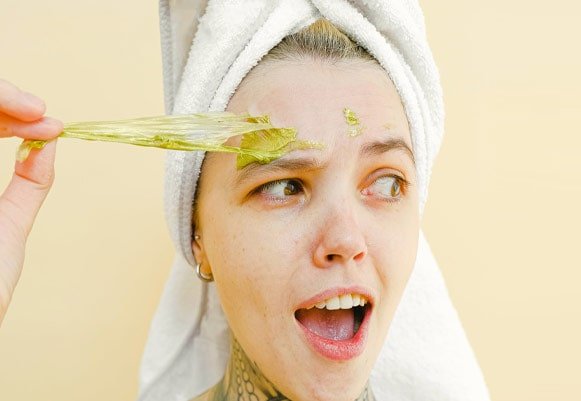Skin Rejuvenation Treatment
'BEAUTY IS BEING COMFORTABLE AND CONFIDENT IN YOUR OWN SKIN.

Ironically, this is not always possible on our own and often we need to see a specialist to get this confidence in life. Aging is inevitable. As we step into our teens, we start facing pimple problems. No matter whatever we try, pimples are difficult to go. As we grow a little more, we realise that these pimples or acne have left ACNE SCARS on our face.
Then our skin texture starts changing, and we notice OPEN PORES which seem resistant to any facial. We further age and our skin also start showing signs of aging like DULL SKIN, WRINKLES, HYPERPIGMENTATION, FINE LINES, LOSS OF VOLUME, etc. These concerns are altogether dealt with SKIN REJUVENATION TREATMENT in our clinic under the care of a trained aesthetic and cosmetic surgeon, Dr. Ashish Khare.
Let us shed some light on Skin Rejuvenation Treatment
Ageing of the skin affects both the epidermis and the dermis and produces atrophy of the skin components. It is exacerbated by the actinic damage and the superimposition of the actinic damage results in dermal disorganisation and elastosis (the presence of thickened, degraded, elastic fibres). Gradually, there is fat cells and collagen atrophy and there is the loss of volume. This results in loss of skin tone, hyperpigmentation, wrinkles, and fine lines on the face.
Our aesthetic doctor, Dr. Ashish Khare, is a trained cosmetic surgeon and one of the best in his field.
He will examine you and let you know what exactly is the condition of your skin.
He will suggest the best suitable treatment for you, sometimes a cocktail of treatments - especially customized according to your requirement and needs.
The procedure and the advantages/ disadvantages of all the treatments would be discussed in detail.
Past results of the patients would be shown and the expected number of required sittings planned.
Patients should understand that every skin type is different and few patients may react differently from the expected result.
1. CHEMICAL PEELS
This is the most commonly used method for skin exfoliation and improvement of skin quality. It works by inducing a controlled injury to the outermost layer of skin, resulting in peeling off of this layer. The new layer regenerates from below which is a smoother one, which usually takes 2 weeks.
Chemical peels can be applied on the face, neck, hands, back, and outer genitalia.
Usually, 6 to 8 sessions of peel are required 3 to 4 weeks apart.
Benefits of peeling are :
It is usually of three types depending on the depth of the action on the skin layer:
Below is the description of some peels being offered in KALOSA, the best centre for a chemical peel in Delhi/ NCR.
PRECAUTIONS FOR CHEMICAL PEEL
2. STEM CELL THERAPY (PRP) - This is again a revolutionary technique popular nowadays. This uses your own blood sample, around 20-30 ml which is then centrifugated and platelet-rich plasma part is separated. This part is rich in growth factors which are important for cell rejuvenation and collagen remodeling. This is then injected into the face through very fine insulin syringes or micro-needling. This works by regenerating the cells, remodeling collagen while healing the damaged cells, and rejuvenating the skin. It improves fine lines and eliminates acne. Collagen growth helps in tightening the tissue and eliminating wrinkles.
VAMPIRE FACIALS - This is one of the most popular facials done by cosmetologists. This involves PRP injection on the face along with filler injection on specific desired sites.
CONTRAINDICATIONS TO PRP THERAPY -
3 . DERMABRASION
Dermabrasion is a procedure that mechanically abrades the epidermis and the upper portion of the dermis. The epidermis is entirely obliterated and there is a partial removal of the dermis. Both coarse and fine wrinkling can be treated with dermabrasion. It is inexpensive and portable and produces less erythema than other techniques.
Key steps for the procedure are :
COMPLICATIONS - include hyperpigmentation, hypertrophic scarring, and milia, although pigmentation changes are less of a problem. Undertreatment may lead to inadequate results whereas overtreatment may lead to hypopigmentation and scarring.
4. LASERS - These are again revolutionary energy-emitting source which is a boon to cosmetic patients. The laser is an acronym for light amplification by stimulated emission of radiation. This is also known as laser abrasion or vapourization. The laser beam used removes the outer layer of the skin, heats the underlying dermis layer, and stimulates the growth of collagen fibers. The new skin formed is smoother and firmer, hence results in reduction of facial wrinkles, scars, and blemishes. The laser treatment works well to even out the skin tone, treat the brown spots, and enhance the overall skin brightness. The high energy light emitted is absorbed by the melanin, which treats the problem through destruction, or removing the brown spots.
The popular lasers used are CO2, ERBIUM, FRAXEL, Q SWITCHED, etc.
Multiple sittings are required depending on the severity of the lesion.
You may not be a good candidate for laser skin resurfacing if :
Clinic Timings
Mon to Sat : 10:00 AM to 7:00 PM
Sunday : 10:00 AM to 5:00 PM